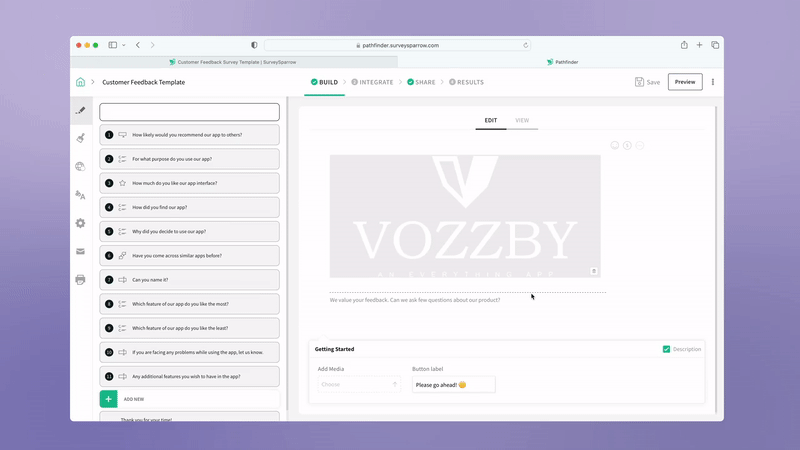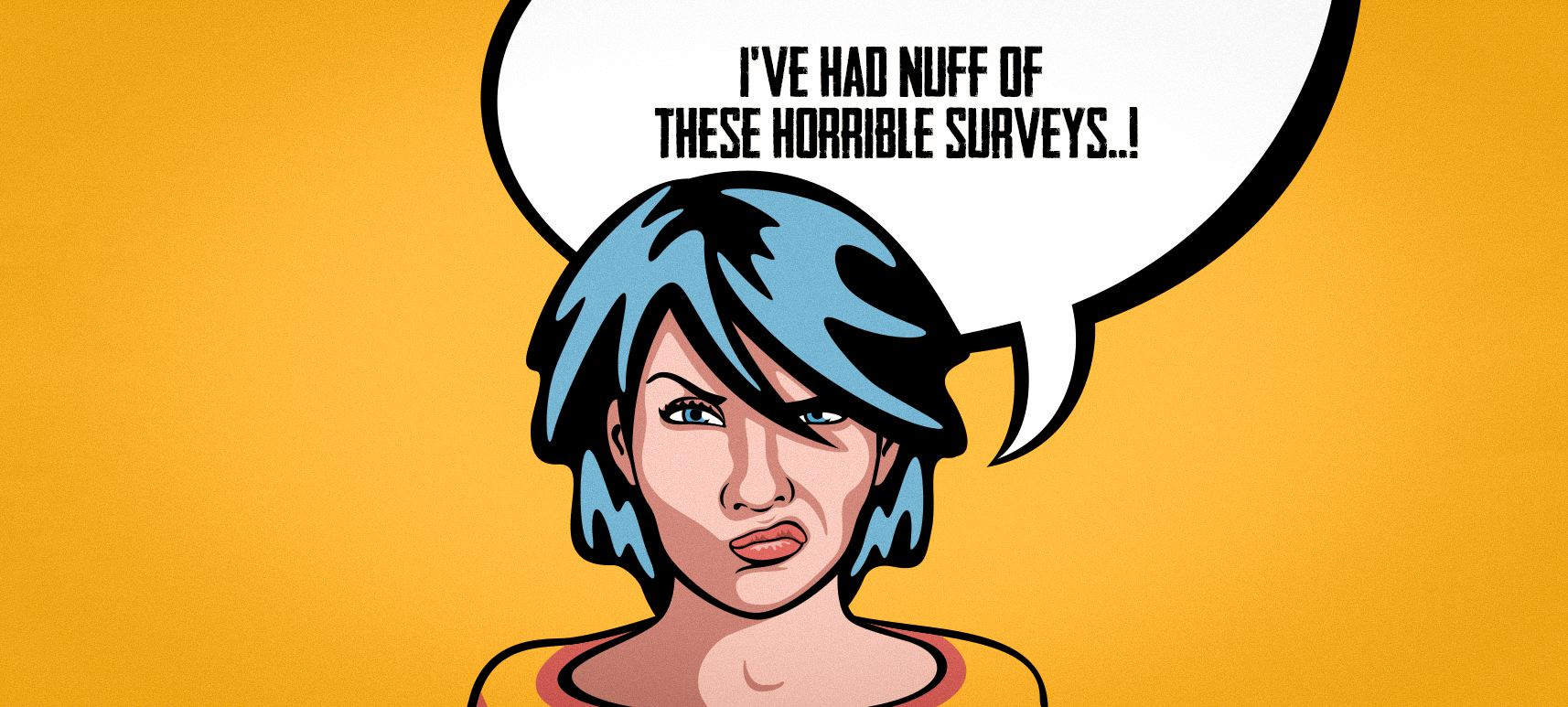Survey & Feedback
What is a Color Analysis Quiz? Find your Color Palette!
Article written by Kate Williams
Content Marketer at SurveySparrow
9 min read
19 September 2025

A Color Analysis Quiz is quintessential to understanding the palette that flatters your unique style the most!
I took a seasonal color analysis test quite recently. It turns out I’m a Cool Winter! As per the analysis, I bought and filled my entire wardrobe with colors that suit my eyes, hair, and skin tone. It’s worth it. Take my word for it!
If you’re confused, maybe this blog can help. We will look into the meaning of color analysis, what the quiz does, the types of tests used, how it works, and all you need to know about your palette!
(Oh, I have added a free template if you want to try it out.)
What is Color Analysis?
Color analysis is the process of discovering the color palette that best suits you. It is based on the undertones of your natural eye color, skin tone, and hair type. It is hard to point out who founded the method.
Bernice Kentner and Carole Jackson combined their idea of color theory. Artists such as Albert Munsell, Robert C. Dorr, and Suzanne Caygill also had an influence. In the 1970s, with advancements in printing and color reproduction technology, the seasonal categorization of colors was introduced. Here, the palette is categorized into Spring, Summer, Winter, and Autumn and further subdivided into cool, warm, and clear.
This idea has come a long way. Many contemporary analysts have made and continue to make significant contributions to the method, which is ever-evolving.
So…
What is a Color Analysis Quiz?
It is a personal quiz that helps you understand which colors to focus on. By having a clear idea of the colors and tones that match your natural features, you can personalize your wardrobe. The quiz would typically have questions about your jewelry preferences, the color of your iris, the shade of your hair, and your natural complexion.
Check out this free color analysis quiz template made with SurveySparrow. Using advanced branching, such as skip and display logic and question piping, you can send personalized quizzes.
Color Analysis Quiz Template
Use This TemplateThis quiz is beneficial for both you and the one taking the test. The personalized thank you pages will give your clients an idea of their palette. At the same time, the collected responses at your end will help you understand what you are dealing with.
It can be used by:
- You (for personal use)
- Fashion stylists
- Wardrobe Consultants
- Personal shoppers
Example
Let me give an example of a professional scenario first. Say you are a stylist for an established fashion brand. You can create hues that stand out by rolling out a color analysis test to the models before starting your work on the next set of exhibits.
Or, say you have a client who has a concert next month. You have to create a wardrobe for the entire band. Testing out fabrics on each of the members can be time-consuming, right? A color test helps you understand the palette you need to work on.
Benefits of a Color Analysis Quiz
A seasonal color analysis will help you create a unique style that stands out. Moreover, having a range of colors that flatter your natural beauty will make you confident in your skin.
Now, there are many ways to do it. You can hire a personal analyst or contact an agency. But, the easiest way is to roll out a “What is my color analysis” quiz. This helps you…
- Build Your Style: Having a list of colors or a season of colors that make your personality stand out builds confidence. This confidence will help you build a personal style as you try things outside your comfort zone.
- Improve Wardrobe Coordination: Now, when you are ready to try new things, you are ultimately letting your wardrobe expand. Based on the analysis, you provide the stylist with an open canvas after the quiz.
- Manage Time: Not everybody has the time to spend days flipping through color grids. A quiz just takes that extra time off your hat! Doing so can put the extra time you saved into other important aspects.
- Be Cost-Effective: Time is money! Moreover, you can save yourself some extra penny you might have to spend hiring an agent or booking a consultation.
Using an advanced quiz maker such as SurveySparrow can save time and money when looking for an analyst. Now, you saw the pre-designed quiz template, right? The platform does not leave you stranded after creation. You can collect the responses, visualize them, and analyze them with advanced tools, all in one place!
(We’ll talk about how to customize the template and use SurveySparrow in detail in a bit)
But while at it, you can take it for a free spin if you want to explore!

Let’s move on to an important question…
How Does Seasonal Color Analysis Work?
You might have seen color analysis filters gain popularity on social media platforms. But what do they actually do?
Let’s look at the process, shall we?
First up, ..
Color Dimension
This involves evaluating an individual’s natural colors based on three aspects- Hue, Value, and Chroma.
- Hue is a color’s warmth (yellow) or coolness (blue). For example, the more yellow is added to a color, the warmer it becomes. Similarly, the more blue, the cooler it gets.
- Value is the depth of a color. It refers to how dark or light the color is. If the color black is added, it becomes darker and gains depth (Dark Shades). In the case of white, it becomes lighter. (Pastel Shades)
- Chroma is the clarity or brightness of a color. Clearer colors are highly saturated, and muted ones come closer to grey.
Next…
Fix the Season
(With the right questions)
Based on the color dimensions, you will be categorized into seasonal categories: Winter, Summer, Spring, and Autumn. This can be done by asking the right questions in the quiz.
Winter
- Skin Complexion: Cool, clear, and deep tones.
- Hair: Dark, with cool undertones
- Eye color: Cool tones of eyes like blue, green, or gray.
- Pallete: Colors like royal blue, emerald green, and black.
- Also, veins appear as purple or blue.
Spring
- Skin: Light, warm, clear skin tones.
- Hair: Light with a warm undertone.
- Eye: Warm-toned like hazel, light blue, green, or warm brown.
- Palette: Lighter colors like coral, mint green, lemon yellow.
- Veins appear as green or a shade of yellow.
Summer
- Skin: Light, soft, and cool tones.
- Hair Color: Light with cool undertones.
- Eyes: Cool tone, such as blue, green, or gray.
- Palette: Light, soft, and cool colors like lavender, seafoam green, or soft pink.
- Veins appear blue or green.
Autumn
- Skin: Soft, warm, and deep tones.
- Hair: Often with darker shades, warm-toned hair.
- Eye: Warm-toned eyes, such as brown, golden brown, or hazel.
- Palette: Mustard yellow, rust orange, or olive green.
- Veins appear to be a shade of green or yellow.
Based on this analysis, you can fix your wardrobe right away! Now, you might be confused as to what to ask, right?
Questions to Ask in a Color Analysis Quiz
Here are a few questions you should consider while sending quizzes to your customers. Feel free to add these questions to the template attached above. Oh, and I have divided the sections into five categories: hair, eyes, skin, preferences, and color associations.
Let’s begin with questions about…
Hair Color
- What is your natural hair color? (brown, black, blond, red…)
- Do you have highlights or lowlights in your hair?
- Do you prefer to keep your natural hair color, or do you like to experiment with it?
Eye Color
- What color are your eyes? (blue, brown, grey, green…)
- Do you have any flecks or rings of a different color in your eyes?
- Do you feel your eye color is a prominent feature of your appearance?
Skin Tone
- How would you describe your skin tone?
- Does sun exposure affect your skin?
- Have you analyzed your skin for an undertone?
Color Preferences
- Do you prefer bold, dark colors or neutral ones?
- Have you noticed patterns in the colors you are drawn to?
- Are there any colors you do not like?
Color Associations
- Do the colors you are drawn to affect your mood?
- Is there a color combination that you prefer?
- Do the colors you choose have a psychological impact on your life?
Next, why don’t we look at how you can customize a template and add these questions?
How to Use SurveySparrow to Make a Color Analysis Quiz
With SurveySparrow’s drag-and-drop quiz maker, you can create engaging quizzes with just a click of a few buttons. Moreover, the AI-powered builder takes all the effort away. Create a small prompt, hit send, and get a quiz on your account.
Here’s a simple guide. Let’s look at each step in detail.
Step 1: Log in
Enter your credentials and log in to your SurveySparrow account.
Don’t have one? There’s never a wrong time! Sign up right here for a free trial to get started.
14-day free trial • Cancel Anytime • No Credit Card Required • No Strings Attached
Step 2: Create
Once you log in, it is time to create your quiz. Do you want to make one independently, or is it a template you want to work on? If it’s the former, click on (+) New Survey. If it is the latter, choose Browse Classic Surveys, skim through the 1000+ pre-designed templates, and choose one.
Let’s say you choose to customize the free template added above.
Step 3: Customize
There are numerous ways to work on a pre-designed survey. You can edit the populated fields with the AI-Wing Feature– edit, expand, compress, or edit to your heart’s desire. You can remove any questions you feel don’t fit the bill. Add the ones you want from the multiple question types available in the builder.
Here’s a demo of how to go about the template:

Step 3: Integrate and Share
Your quiz is ready to be shared! But before that, connect it with third-party integrations from the vast list. I suggest Zapier, HubSpot, Mailchimp, Google Analytics, or Excel for a smooth workflow.
Next up, it’s time to reach out! Share it via multiple platforms, including SMS, WhatsApp, and social media. You can also embed it in an email or on your website so that anyone visiting can take the quiz immediately.
Dont stop! There’s more…
Step 4: Analyze
After the responses flow in, collect them and visualize the data on an executive dashboard. Apart from response tracking, dive in a bit deeper! You can break down the responses with real-time reporting, sentiment analysis, and text analytics. With these insights, you can understand the hidden patterns and trends.
Wasn’t that easy? If you get confused, our support team is just one call (or chat) away! Feel free to reach out!
Wrap Up!
You have learned the importance, benefits, and ways to create a color analysis quiz. So what’s the wait for? Jump ahead and provide your clients with a personalized experience! If it’s for your personal use, try it out and fill your wardrobe with the colors that flatter your inner self!
Happy Exploring!

Create engaging surveys that people actually complete. Try SurveySparrow now!
Kate Williams
Related Articles

Survey & Feedback
80+ Remote Learning Survey Questions for Students, Teachers, and Parents
8 MINUTES
17 January 2022

Survey & Feedback
SurveySparrow Ranks Tenth in the Top 20 Survey Software List by Capterra!
2 MINUTES
14 August 2018

Survey & Feedback
Tired of Awful Surveys? We’re too!
6 MINUTES
27 September 2018

Survey & Feedback
30+ Food Quality Survey Questions to Ask Your Customers
6 MINUTES
11 February 2022
